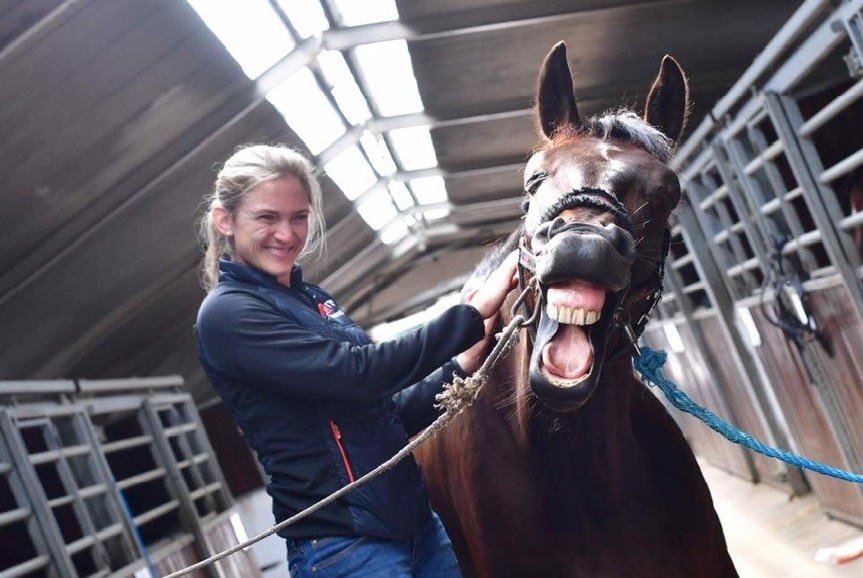Equine Therapy Success Stories: Genuine People, Genuine Emotional Changes
Equine Therapy Success Stories: Genuine People, Genuine Emotional Changes
Blog Article
Just How Laser Treatment in Horse Therapy Is Transforming Vet Look After Equines
Laser treatment has arised as a transformative strategy in equine veterinary treatment, providing a non-invasive option that expedites recovery and boosts overall wellness. The portability and adaptability of laser treatment tools better highlight their expanding necessity among veterinarians.
Recognizing Laser Treatment

The modern technology behind laser treatment is based in the concept of photochemistry, where photons are soaked up by chromophores within cells, leading to increased ATP production and inflection of responsive oxygen varieties (Equine Therapy). This, subsequently, advertises mobile spreading, lowers swelling, and increases recovery. Vet experts make use of various sorts of lasers, consisting of low-level lasers (LLLT) and high-power Course IV lasers, depending upon the certain healing goals and the nature of the equine problem being treated
Different laser wavelengths and power settings are thoroughly chosen to target different tissue depths and attain wanted clinical outcomes. Safety methods are paramount, as improper use can bring about thermal damages or suboptimal healing results. Hence, a thorough understanding of laser therapy's systems and applications is vital for its efficient implementation in equine veterinary method.
Benefits for Horse Wellness
The myriad benefits of laser treatment for equine health and wellness incorporate improved recovery, pain decrease, and improved flexibility. This sophisticated therapy technique leverages specific wavelengths of light to permeate tissues, promoting cellular feature and promoting quick cells fixing. The non-invasive nature of laser therapy ensures very little stress and anxiety and discomfort for the equine, facilitating a smoother healing procedure.
Improved healing is one of the primary benefits, as laser therapy speeds up cellular regeneration and collagen synthesis. Discomfort reduction is accomplished via the anti-inflammatory effects of laser therapy, which reduces swelling and lowers the manufacturing of pain-inducing chemicals.
By minimizing swelling and pain, and improving tissue repair work, laser therapy aids in recovering joint feature and muscle mass versatility. Thus, laser therapy stands as a transformative device in contemporary equine veterinary treatment.
Typical Conditions Treated
Laser therapy has become a flexible treatment choice for a range of typical equine conditions. Among these, musculoskeletal injuries are especially amenable to laser therapy. Equine Therapy. Soft cells injuries, such as tendonitis and tendon stress, benefit from the anti-inflammatory and analgesic effects of laser treatments, which accelerate recovery and decrease discomfort. Furthermore, laser therapy works for conditions like osteo arthritis, where it helps mitigate joint swelling and advertise cells repair service.
Wound management is an additional area where laser treatment has actually shown considerable promise. Chronic injuries or slow-healing ulcers can be especially tough in horses, yet laser therapy improves mobile regeneration and enhances blood flow, thus quickening the healing procedure. Furthermore, laser therapies have actually been successfully employed in handling unguis conditions such as laminitis and abscesses, relieving pain and advertising faster recuperation.

Technology Behind Laser Therapy
Past the myriad problems treatable with laser treatment, the technology itself advantages better evaluation. At the heart of laser therapy is making use of details wavelengths of light to permeate tissues and evoke biological feedbacks. These wavelengths, usually varying from 600 to 1000 nanometers, are selectively soaked up by chromophores in the skin, muscle mass, and various other tissues, initiating a waterfall of mobile you can check here events.
Laser gadgets used in vet medication commonly make use of low-level laser therapy (LLLT) or chilly laser therapy. Unlike high-powered medical lasers, these gadgets operate at reduced energy degrees, enhancing therapeutic advantages while decreasing review thermal damage. The power from the laser light promotes adenosine triphosphate (ATP) production, boosts cellular metabolism, and increases tissue repair procedures.

Success Stories and Situation Researches

Showcasing the substantial advantages of laser treatment, numerous success stories and study illuminate its transformative influence on equine health and wellness. One such situation includes a pureblood racehorse struggling with persistent tendonitis. Standard therapies generated very little enhancement, yet after incorporating laser therapy right into the program, the horse displayed significant decreases in swelling and discomfort within weeks, eventually going back to affordable racing.
An additional engaging example features a dressage equine diagnosed with severe neck and back pain, restricting its efficiency. A veterinary group used low-level laser therapy (LLLT) to target the inflamed areas, resulting in marked renovation in adaptability and a remarkable decline in discomfort. Over several sessions, the horse reclaimed its peak type, showcasing the efficacy of laser treatment in resolving musculoskeletal problems.
Additionally, a research carried out at a leading equine clinic examined 50 steeds with various soft tissue injuries treated with laser therapy. The outcomes were striking: 85% of the steeds demonstrated accelerated recovery times and improved mobility. These situations underscore the convenience and efficiency of laser therapy in equine medication, offering a non-invasive, scientifically-backed strategy to enhancing recuperation and performance in steeds.
Final Thought
Laser treatment is transforming equine vet care by providing a non-invasive therapy that increases healing, lowers inflammation, and reduces discomfort. these details With its effectiveness in dealing with a range of problems, from bone and joint injuries to chronic disorders like osteo arthritis, this technology dramatically improves equine health and wheelchair. The portability and flexibility of laser therapy further highlight its transformative effect on veterinary techniques, solidifying its function as a crucial tool in modern-day equine health care.
Report this page